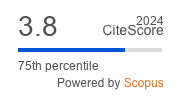Article | Open Access
Spatial Accessibility in Urban Regeneration Areas: A Population-Weighted Method Assessing the Social Amenity Provision
| Views: | 3949 | | | Downloads: | 1814 |
Abstract: Principles of social sustainability serve to guide urban regeneration programmes around the world. Increasingly, the upholding of these principles is subject to qualified evaluation and monitoring. One of the cornerstones of social sustainability is access to basic services. This is also a strategic and operational objective in urban regeneration measures. While indicator-based evaluations of accessibility do exist, hitherto they have tended to apply descriptive statistics or density parameters only. Therefore, there is a need for small-scale, regularly updated information on accessibility, such as the nearest facility based on street networks and population density. This deficit can often be attributed to the complex methodological requirements. To meet this need, our article presents a method for determining the spatial accessibility of basic services with low data requirements. Accessibility is measured in walking time and linked to the local population distribution. More specifically, GIS tools in connection with land survey data are used to estimate the number of inhabitants per building; the walking time needed to reach four types of social amenity along the street network is then determined for each building; finally, a population-weighted accessibility index is derived and mapped in a 50-m grid. To test this method, we investigated four urban regeneration areas in Dresden, Germany. The results show that with freely available geodata, it is possible to identify neighbourhoods and buildings with both high population densities and poor accessibility to basic services. Corresponding maps can be used to monitor urban regeneration measures or form a basis for further action.
Keywords: accessibility; population mapping; social amenities; socially integrative urban development; spatial network analysis; urban renewal
Published:
© Robin Gutting, Maria Gerhold, Stefanie Rößler. This is an open access article distributed under the terms of the Creative Commons Attribution 4.0 license (http://creativecommons.org/licenses/by/4.0), which permits any use, distribution, and reproduction of the work without further permission provided the original author(s) and source are credited.


